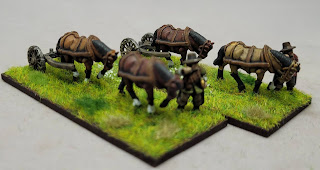The Museum of London Docklands currently has an exhibition exploring 700 years of executions in London's history; originally planned to appear in 2020 the exhibition fell victim to lockdown cancellations and disappeared from the Museum's schedule. It's finally here, but now on show at Docklands rather than the London Wall site.
As I mention the London Wall site, it is about to permanently shut its doors (December 4th), in preparation for its move to the new site in West Smithfield (planned to open in 2026) and rebrands itself London Museum.
The exhibition runs until 16th April 2023 and has an entrance charge. The Musuem recommends that the exhibition is suitable for 12 years and older. Obviously, the lack of interactive execution methods precludes the very young. The exhibition, unsurprisingly given its theme, is very macabre and probably isn't for everyone.
The exhibition starts with a look at methods of execution and its use in medieval times, mostly the exhibits are woodcuts with informative, wordy, explanation panels. On entering the first main space of the exhibition you are confronted with an audio-visual presentation and, for those of us interested in the Civil Wars, the star attractions. Needless to say, the execution of Charles I figures prominently.
 |
| King Charles The Martyr c1660, the mourners represent England, Scotland and Ireland the Three Kingdoms |
 |
| c1649 German print of Banqueting House and the execution of Charles I |
The highlight of the exhibition is a case containing a number of items claiming to have been worn by Charles to the executioner's scaffold.
 |
| Linen handkerchief with royal cypher in silk, mid-C17th. Claimed to have been carried by Charles on the day of his execution. Possibly too plain to have been a royal handkerchief? |
 |
| Leather gloves mid-C17th. Believed to have been given by Charles to Bishop Juxen who accompanied him to his execution. |
 |
| Knitted silk vest, mid-C17th. Claimed to be the 'extra shirt' that Thomas Herbert stated the King wore to his execution. The shirt was acquired by the museum in 1924: it was supposedly given to the King's physician Dr Hobbs, whose family kept it until the late C-19th when it was sold. It then changed hands a number of times before being acquired by the museum. Testing of the stains has been inconclusive, but what they are is certainly not blood. This, and the uncertain provenance throw considerable doubt upon whether this belonged to Charles. |
 |
Royalist memorial pendant, and fragments of a cloak believed to have been worn by Charles to the scaffold. These fragments had an accompanying note claiming that they were all that was left of the cloak that was spirited away by Thomas Herbert.
The cloak fragments are interesting, as a National Trust property close to Château KeepYourPowderDry claims to have part of Charles's execution cloak: the story being that the cloak was cut up and distributed to loyal supporters. Whilst the Legh's of Lyme were Royalist supporters I wouldn't have them down as 'premier league' supporters, they wouldn't be on any list of 'most loyal' supporters who I would expect to have been given a portion of cloak. Of course, if the Lyme claim is accurate, money may have exchanged hands to acquire such an artefact.
The final item of Charles's execution clothing is a scarf, which again, whilst very fine cannot be pinned down to having belonged to Charles.
 | | Grrr! Exhibit label describes this fine scarf as a 'sash' 1625-1650 |
|
There are a number of other examples of execution in the C17th, most notably that of witches, which feature heavily in the audio-visual room dominated by the Tyburn three-legged tree.
As the exhibition appears to be laid out in chronological order, I expected that my C17th interest would falter after leaving the Tyburn tree 'room', I was wrong. There are a number of other relevant exhibits amongst the harrowing stories of Georgian and Victorian capital punishment.
 |
| Copy of 1658 play 'The Witch of Edmonton' by Rowley, Dekker and Ford |
 |
| The identity of Charles's executioner was never revealed. Richard Brandon was official executioner at the time, so many believed that it was him - this pamphlet apparently being Brandon's death bed confession. The 'confession' is regarded as a fake, but Richard is one of the most likely candidates to have been the man who killed the king. Richard had dispatched Archbishop Laud and the Earl of Strafford. |
 |
| C17th halberds |
 |
| ...and in the interests of balance, the posthumous execution of Cromwell gets a mention too |
As this was the first time that I have visited the Docklands site I thought I'd have a look around the rest of the museum. Things get a little interesting on the second floor - a labyrinth worthy of Ikea or as a home to a minotaur. I'm genuinely relieved to say that myself and #4 son escaped with our lives.
Postcodes for SatNavs & Transport
Museum of London Docklands, West India Quay E14 4AL DLR:West India QuayIf you enjoyed reading this, or any of the other posts, please consider supporting the blog. Thanks.






















Comments
Post a Comment